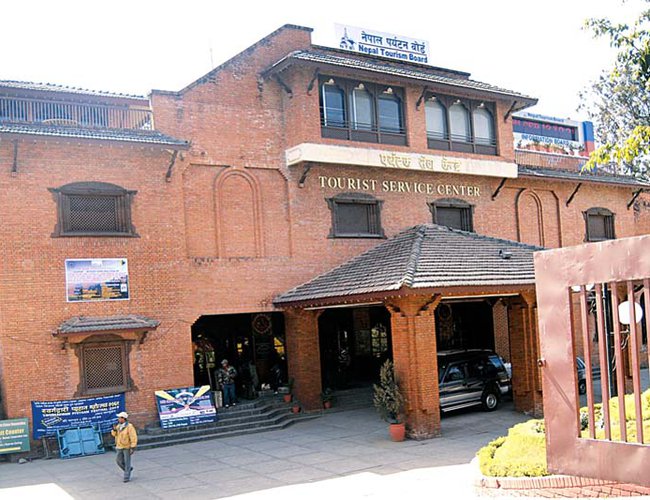
Now a day, the business size of worldwide tourism equals or even surpasses that of oil exports, food products or automobiles. Tourism has become one of the major players in international business and characterizes, one of the main income sources for many developing countries. This growth goes hand in hand with a growing diversification and competition among destinations.
As tourism is consumed at the point of production, it is giving local businesses and communities the opportunity to benefit by selling goods and services directly to visitors in local destinations and with assets to offer such as culture, art, music, natural landscapes and wildlife.
For country like Nepal, it supports economic activities, providing jobs and income through the supply chain. Being labor intensive, it provides a wide range of employment prospects, especially for women and young people and it creates openings for much small and micro business. Tourism also supports instill cultural pride and greater awareness of the natural environment, and the infrastructure required by tourism.
The earthquake of 2015 badly damaged many parts of Nepal, which killed around 9000 people and caused around US$ 10 billion economic loss. Major sites of global cultural and religious significance of Kathmandu valley destroyed badly and the deadly avalanche on Mount Everest and landslide of Langtang Valley killed hundreds of people during the earthquake.
The year of earthquake was shocking for tourism industry as number in tourist arrival sharply fell. However, the next following years, tourist arrival increased satisfactorily and reached around a million arrivals. The increasing numbers of tourist flow signifies that Nepal is now safe and secure for tourists.
Global destination
Nepal has the potential to be among the top attractions on the global tourism map and has strong prospects to be the top destination in South Asia. Eight of the world´s 10 tallest peaks are in Nepal. The world famous trekking routes of Nepal attract tourists from all over the world. Nepal is also rich in festivals.
Being the pivotal point of Hinduism and Buddhism, it has potent to attract tourists from South Asian and South East Asian countries. Besides, there are high possibilities to increase the number of tourists arriving from western countries and rest of the world for cultural and adventure tourism.
Nepal is the world’s biggest natural and historical museum. Since time immortal, Nepal has always been considered as the holiest of the holy lands for the Hindu and the Buddhists. Nepali people are well known for their language of generosity.
Shangri La is still alive in Nepal. The Himalayas are considered as a faraway haven or hideaway of idyll and tranquility. The Himalayas are a place of complete bliss and delight and peace. While travelling the mountains of Nepal one can perceive an imaginary remote paradise on earth, a remote and exotic utopia.
Nepal is home to eight UNESCO World Heritage cultural sites. That includes three royal cities and several Hindu and Buddhist sites within the Kathmandu Valley, Lumbini, the legendary birthplace of the Buddha, and Chitwan National Park in western plain of Nepal.
More than hundred (majority in Kathmandu valley) tourist destinations have been declared by the Nepal government. The important places of attraction to visit in Nepal are- Kathmandu Valley, Pokhara Valley, Chitwan National Park, Everest Base Camp, Annapurna Trekking Circuit, Bardia National Park, Lumbini Temple, Muktinath temple, Janakpur Temple, Langtang Valley, Dolpa, Khaptad, Upper Mustang and Mountain Flights to see major Himalayan peaks.
Numerous international travel websites have listed Nepal among one of the topmost tourist destination. As for instant, according to Lonely Planet’s Annual “Best in Travel List”, Nepal is the Best Value Destination to travel in the year 2017. Nepal has even made it to Lonely Planet’s list of Top 10 countries that ‘you cannot afford to miss list’. Nepal ranked 5th in the list.
Initiation to reform
Government of Nepal has specified policies to support tourism sector by promoting tourism market in neighboring countries, investing in the areas where tourists are in high flows, developing internal tourism infrastructure by supporting the private sector and encouraging environment friendly tourism activities. Moreover, it is also activating the embassies and the consular offices abroad for tourism development.
The recent actions of the Government of Nepal delivering optimistic confidence regarding infrastructure development in the tourism sector. Record-breaking billions budget have been allocated for the construction of additional international airports and other infrastructures.
The construction of Gautam Buddha International Airport at Bhairahwa in one year and Pokhara international Airport in three years, are going to be completed. The alternative to Kathmandu Airport, the Nijgadh International Airport is in its initial stage of construction and an express highway, which is under construction will connect this airport to reach within an hour to Kathmandu. Moreover, the government and the private sectors are investing in tourism infrastructures all over important destinations. Easy land and air access and accommodation with better facilities in tourist spots would support considerable growth in tourist arrival.
From four regional airports of Tarai - Nepalgunj, Biratnagar, Janakpur and Dhangarhi, private airlines are in process to start flights to Indian cities in near future. Buddha Air has already announced to operate flights to Indian capital city Delhi from regional airport of western plain town Nepalgunj. This route would expected to add additional one hundred thousand Indian tourists’ visit in tourist sites of western and far western region of Nepal specially visit to Kailash Mansarovar pilgrimage in China.
Impediments and challenges
However, still the Nepalese tourism industry is not stable; it’s always moving upward and downward. The tourism sector witnessed major instability during the ten years of the Maoist insurgency, border blockades and great earthquake of 2015.
Nepal is suffering from problems of mismanagement, lack of infrastructures and limited external investment. The only one ill-managed international airport, and slow pace of airport and infrastructure development are causing more hitches to expand the tourism sector out of limited destinations.
Although, there is a plan to extend the airport terminals (both arrival and departure), apron area, runway, number of baggage belts at arrival and parking areas, but all these constructions are moving on snail’s speed.
After nine years of continued effort by Nepal, this June discussion between aviation authorities of India and Nepal could not clear the path for two-way aircraft flying in high altitude from Nepal to India through Nepalgunj and Mahendranagar air routes. These routes could drastic change the tourism map of Nepal after completion of under constriction international airports of western Nepal.
However, both sides have agreed to operate two-way air routes from Kathmandu to Biratnagar and Kathmandu to Janakpur. International flights to Nepal can now enter and exit from Janakpur and Biratnagar, based on flight security evaluation carried out by both sides.
Likewise, it has been agreed that Kathmandu-Mahendranagar-Delhi air route would be made two-way for aircraft flying in lower altitude, which would also be implemented post security evaluation. We have to still wait for a year for its implementation.
The investment in the tourism sector is basically centralized in Kathmandu and Pokhara and other limited couple of destinations. Remote tourist spots are not properly developed.
Conclusion
Nepal has declared “Visit Nepal 2020 Lifetime Experience” with an objective to bring two million international tourists that year. The existing hotel infrastructure by that time could accommodate, comfortably two million tourists a year.
Nepal has set target of 25 percent contribution from tourism sector within five years. Currently, tourism contributes 5 percent to its GDP and it earns around US$ one billion from one million tourists annually.
Along with the government and the private sector, foreigners and non-resident Nepalese should be also given high priority with better support to invest in this sector. High investment in hotel accommodation, restaurant, entertainment, highway, airport, transport, recreation facilities, cultural, historical and environmental preservation and other activities could certainly support tourism sector up to great extent. A Herculean effort is needed to reform and develop these sectors to compete with other tourist destinations of the world and become international tourism hub.

Hari Prasad Shrestha
He worked under Ministry of Finance, Nepal as Under Secretary and has been associated with the United Nations Development Program (UNDP) Sierra Leone and South Sudan and UNMISS.
- Encouraging Electric Vehicle Use In Nepal
- Dec 04, 2022
- How Could Rising Inflation Disrupt The Nepalese Economy?
- Nov 24, 2022
- Unemployment: The Biggest Challenge For Nepal
- Nov 11, 2022
- The Hunger Game
- Oct 17, 2022
- Nepal's Over Dependency And Sluggish Development
- Sep 30, 2022















